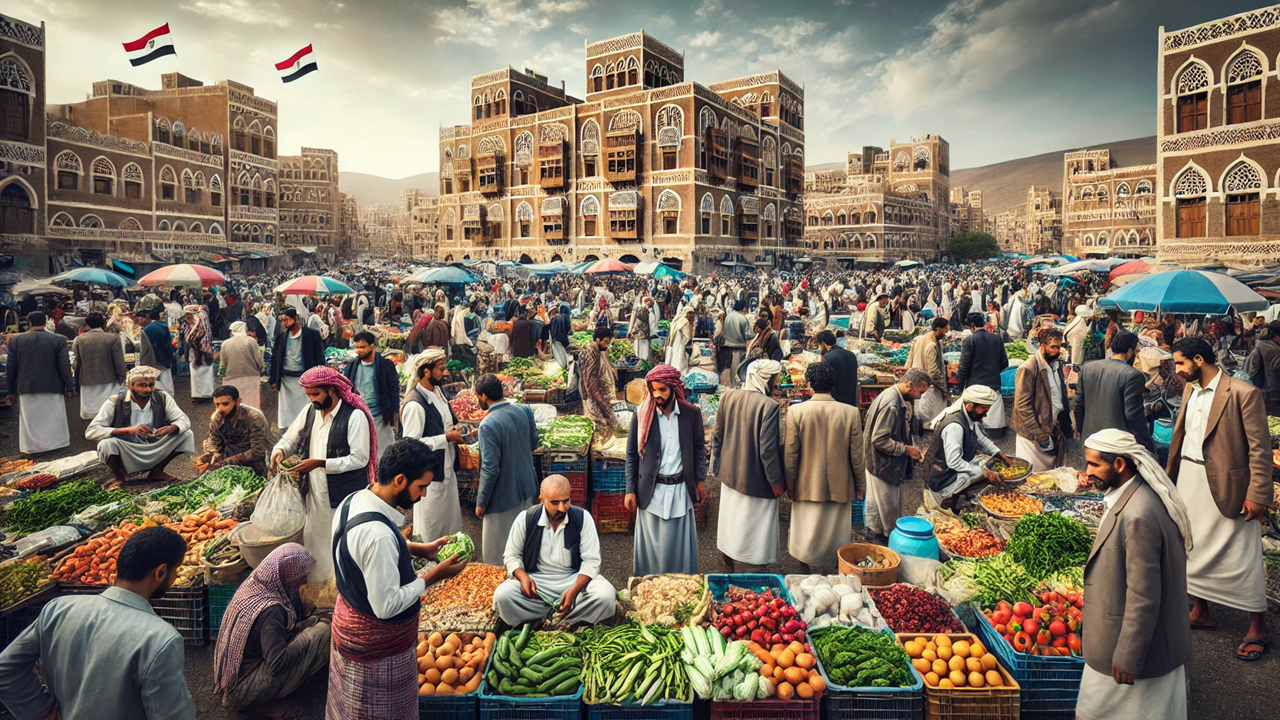World Bank Warns of Deepening Economic Crisis in Yemen Amid Conflict and Division
Titled "Persistent Fragility Amid Rising Risks," the report paints a grim picture of mounting economic pressures, severe currency depreciation, and deepening regional disparities that threaten the wellbeing of millions.

- Country:
- Yemen Rep
Yemen’s already fragile economy continues to deteriorate under the weight of protracted conflict, institutional disintegration, and dwindling external support, according to the Spring 2025 edition of the Yemen Economic Monitor released by the World Bank. Titled "Persistent Fragility Amid Rising Risks," the report paints a grim picture of mounting economic pressures, severe currency depreciation, and deepening regional disparities that threaten the wellbeing of millions.
Sharp Economic Decline Since 2015
The report reveals that real GDP per capita in Yemen has plummeted by 58 percent since 2015, the year civil war erupted following a Houthi takeover of the capital and the subsequent military intervention by a Saudi-led coalition. This collapse in national income has been accompanied by surging inflation, particularly in areas under the control of the Internationally Recognized Government (IRG), where inflation exceeded 30 percent in 2024.
A key contributor to this inflationary spiral is the dramatic depreciation of the Yemeni Rial, which fell from YER 1,540 to YER 2,065 per US dollar in 2024. This has significantly weakened household purchasing power, eroding access to basic goods, particularly food and fuel, and pushing more families into poverty.
Oil Blockade and Fiscal Collapse
One of the most damaging developments in 2024 was the continuation of the Houthi-imposed blockade on oil exports, which are a vital source of foreign currency and government revenue. As a result, IRG revenues (excluding foreign grants) fell to a historic low of just 2.5 percent of GDP.
Despite some stabilization through increased budget support and spending cuts—bringing the fiscal deficit down to 2.5 percent, from 7.2 percent in 2023—the fiscal situation remains precarious. The government continues to face liquidity shortages, mounting debt, and operational constraints that limit its ability to deliver essential services and pay salaries.
A Divided Economic Landscape
The World Bank report emphasizes the structural damage caused by Yemen’s bifurcated economy, now effectively split into two competing systems: IRG-controlled areas in the south and east, and Houthi-controlled regions in the north and west. Each zone operates under separate monetary authorities, exchange rate regimes, and administrative frameworks, compounding the difficulty of implementing cohesive economic policy.
This economic divide also fosters inequalities in access to services, aid, and employment, further marginalizing populations in both zones and undermining national recovery efforts.
Red Sea Disruptions and Soaring Trade Costs
Adding to Yemen’s woes are Red Sea security tensions, which triggered over 450 maritime incidents in 2024, according to the report. These disruptions have severely impacted trade through the Bab el-Mandeb Strait, one of the world’s busiest maritime chokepoints, causing shipping costs to skyrocket and delaying the arrival of vital goods, including humanitarian aid.
Socioeconomic Distress and Humanitarian Crisis
As the economy contracts, Yemen’s humanitarian situation continues to deteriorate. The report states that more than two-thirds of Yemenis face inadequate food consumption, and many are resorting to destructive coping strategies, such as selling off livestock, removing children from school, or incurring unsustainable debt. The collapse of livelihoods has created a cycle of poverty and vulnerability that deepens with each passing year.
In Houthi-controlled areas, where inflationary pressures are more muted, the economic landscape is still grim. Deflation and liquidity constraints have led to the re-emergence of barter and informal transactions in local markets, reflecting the collapse of formal financial infrastructure.
Donor Fatigue and Sanctions Pressure
International donor support, once a lifeline for millions, is also beginning to wane. The World Bank warns that declining donor financing, coupled with increased compliance risks associated with international sanctions, will further constrain Yemen’s economic activity. These conditions are expected to suppress household incomes, restrict liquidity in both economic zones, and undermine market demand, particularly in the north.
Outlook for 2025: Continued Contraction
Looking ahead, the World Bank forecasts that real GDP will contract by 1.5 percent in 2025, while nominal GDP per capita is projected to fall by 19 percent, indicating worsening conditions for ordinary Yemenis. The combination of fiscal stress, exchange rate instability, and fuel shortages will likely deepen economic vulnerability across the country.
Hope Amid Crisis: A Path to Peace and Growth
Despite the bleak outlook, the report outlines three possible economic trajectories for Yemen: the continuation of the current status quo, an escalation in conflict, or a path toward peace and reconstruction.
Under a peace scenario, Yemen could see its economy grow by an average of 5 percent annually over the next 15 years, driven by renewed investment, the rebuilding of public institutions, and targeted reconstruction efforts. Achieving this would require a sustained cessation of hostilities, inclusive political agreements, and coordinated international support.
“Yemen’s economy is being torn between fragmentation and fragility, yet the potential for recovery remains real,” said Dina Abu-Ghaida, World Bank Country Manager for Yemen. “While peace remains critical for long-term recovery, there are actions that can be taken – including supporting local institutions and protecting essential services – to help reduce economic pressures on Yemenis today.”
The report calls on international stakeholders to continue supporting local resilience, strengthen essential service delivery, and facilitate dialogue toward conflict resolution, recognizing that even amidst persistent fragility, seeds of economic recovery can be sown.
ALSO READ
Mozambique on the Brink: UN Warns of Deepening Humanitarian Crisis
Escalating Conflict: Humanitarian Crisis in Gaza Amid Renewed Strikes
Tensions Escalate as Israeli Strikes Renew Amidst Humanitarian Crisis
Escalating Tensions in Gaza: Humanitarian Crisis Deepens Amid Ongoing Conflict
Tragic Strike on Gaza School: A Humanitarian Crisis Unfolds










